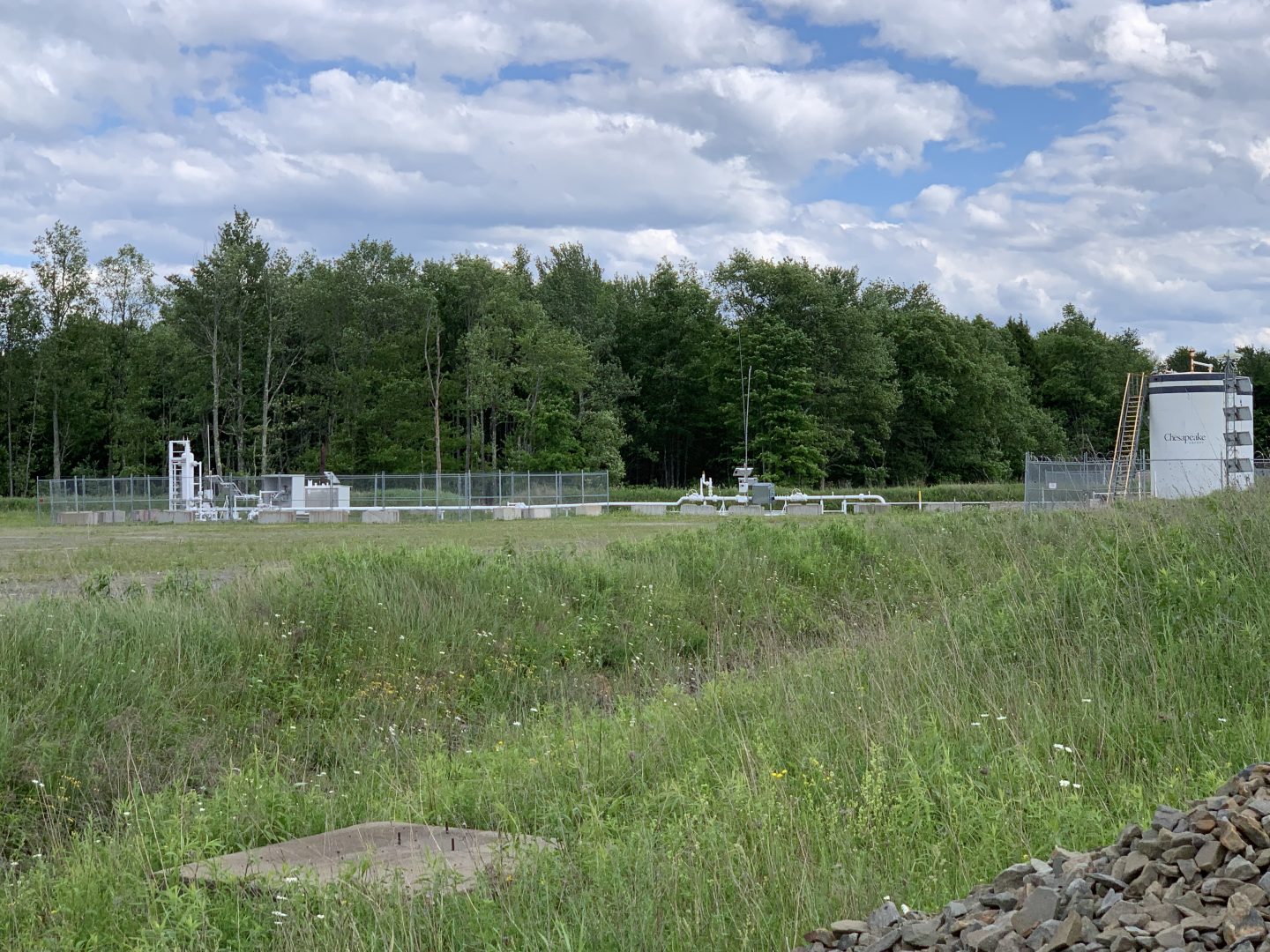
A well pad owned by Chesapeake Appalachia LLC is seen in Fox Township, Sullivan County on Friday, June 12, 2020.
Rachel McDevitt / StateImpact Pennsylvania


A well pad owned by Chesapeake Appalachia LLC is seen in Fox Township, Sullivan County on Friday, June 12, 2020.
Rachel McDevitt / StateImpact Pennsylvania

Rachel McDevitt / StateImpact Pennsylvania
A well pad owned by Chesapeake Appalachia LLC is seen in Fox Township, Sullivan County on Friday, June 12, 2020.
Pennsylvania collected about 20 percent less in impact fees from natural gas drillers last year than in 2018, according to the Public Utility Commission.
That means less money for communities to deal with the impact of drilling.
The PUC on Wednesday said drillers paid just over $200 million last year, down from a record high of $251 million the year before.
The boost in 2018 was partly due to a state Supreme Court ruling that low-producing “stripper” wells are subject to the fee. They had been excluded since Pennsylvania started collecting it in 2011. Even without the ruling, 2018 would have been a record year.
Under the impact fee, drillers pay for each operating well, not the amount of gas produced. The fee varies based on the price of gas and age of the well.
The PUC said 2019’s lower revenue was mainly because of low gas prices. The average price of natural gas on the New York Mercantile Exchange (NYMEX) in 2019 was $2.63 per 1 million British thermal units (MMBtu), down from $3.09 per MMBtu in 2018.
The state’s Independent Fiscal Office said in a January report that the NYMEX gas price has not been below $3 since 2016. Pennsylvania saw its lowest impact fee collections that year, at $173 million.
Gas companies drilled fewer wells last year than the year before — 615 in 2019 compared to 779 in 2018, according to reports from the Department of Environmental Protection. However, the IFO said new wells more than made up for older wells that pay less.
More than $109 million of impact fee money from 2019 goes to the communities where drilling happens and is intended to help offset the effects of the industry. Local governments have used the money for public safety, emergency preparedness and infrastructure.
PUC data shows Washington County will get the biggest payout of counties in 2019 at more than $6.6 million. Center Township in Greene County will be the highest-paid municipality with $1.1 million.
More than $72 million will go to the Marcellus Legacy Fund, which supports environmental and other projects across the state. State agencies will receive $18 million.
Among energy companies, Range Resources paid the most in impact fees at $26.5 million.
The impact fee has raised more than $1.9 billion since it started.
In a monthly economic update also released Wednesday, the IFO noted that revenue losses from COVID-19 are putting some municipalities at risk. Energy industry advocates responding to the PUC’s report said the impact fee will help power recovery efforts.
“As the Commonwealth recovers, natural gas companies will provide the foundational energy to allow people to return to work, visit their families, eat at restaurants, and otherwise continue on with their lives,” said Stephanie Catarino Wissman, executive director of Associated Petroleum Industries of PA.
They also used the opportunity to weigh in against any potential severance tax, which would be tied to gas production.
Democratic Governor Tom Wolf has repeatedly proposed a severance tax, which would be in addition to the impact fee, since he took office, but his efforts have so far been unsuccessful.
StateImpact Pennsylvania is a collaboration among WITF, WHYY, and the Allegheny Front. Reporters Reid Frazier, Rachel McDevitt and Susan Phillips cover the commonwealth’s energy economy. Read their reports on this site, and hear them on public radio stations across Pennsylvania.
(listed by story count)
StateImpact Pennsylvania is a collaboration among WITF, WHYY, and the Allegheny Front. Reporters Reid Frazier, Rachel McDevitt and Susan Phillips cover the commonwealth’s energy economy. Read their reports on this site, and hear them on public radio stations across Pennsylvania.
Climate Solutions, a collaboration of news organizations, educational institutions and a theater company, uses engagement, education and storytelling to help central Pennsylvanians toward climate change literacy, resilience and adaptation. Our work will amplify how people are finding solutions to the challenges presented by a warming world.